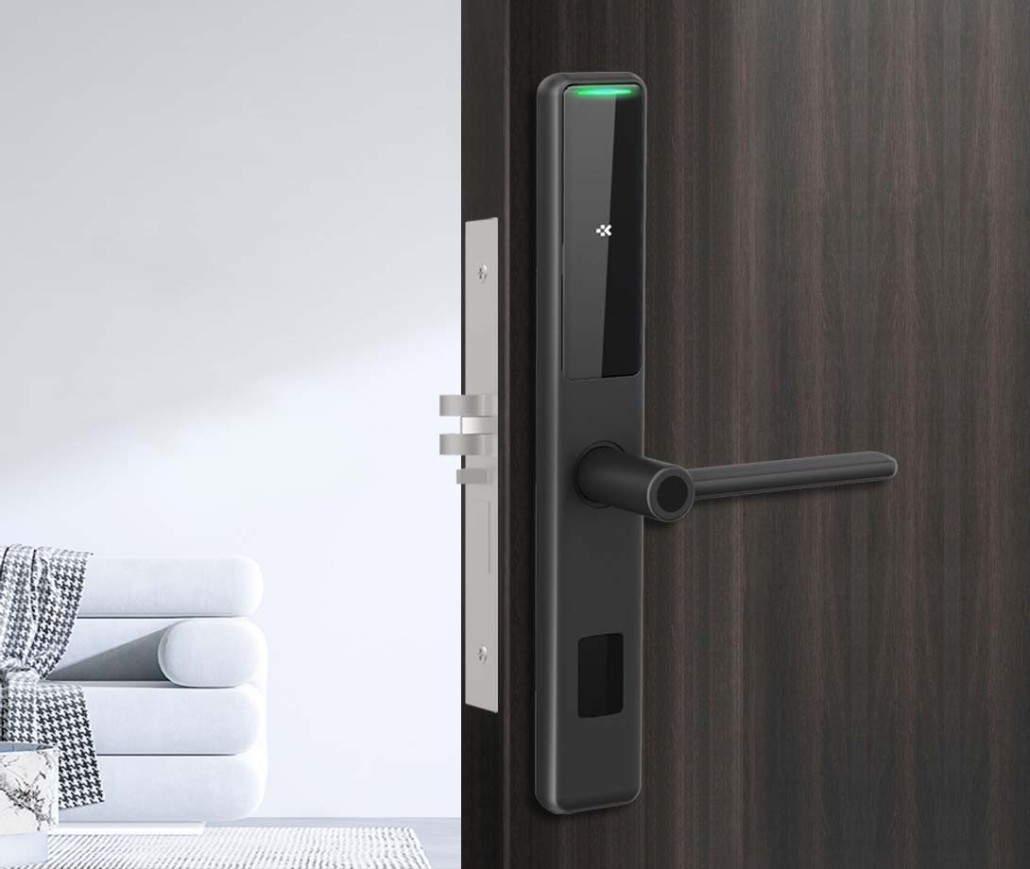How Does a Bluetooth Smart Lock Work?
Smart locks are transforming home security, and Bluetooth-enabled models are among the most popular choices for their balance of convenience and reliability. But how exactly do they work?
This guide breaks down:
Bluetooth smart lock technology
Setup and daily use
Security strengths and weaknesses
How they compare to Wi-Fi locks
Top models for U.S. homes
1. What Is a Bluetooth Smart Lock?
A Bluetooth smart lock is a keyless entry system that uses short-range wireless technology (Bluetooth Low Energy/ BLE) to communicate with your smartphone or tablet. Unlike Wi-Fi locks, they don’t require internet access, making them simpler but with more limited range.
Key Features:
- Unlocks when your phone is nearby (typically within 30-50 feet)
- No monthly fees or hub required
- Longer battery life than Wi-Fi locks (6-12 months vs. 3-6 months)
- Works offline – ideal for areas with spotty internet
2. How Bluetooth Smart Locks Work: Step by Step
Step 1: Smartphone Pairing
- Download the lock’s companion app.
- Enable Bluetooth on your phone and follow in-app setup instructions.
- The lock and phone exchange encrypted credentials (like a digital handshake).
Step 2: Proximity Detection
- The lock constantly broadcasts a low-energy Bluetooth signal.
- When your phone comes within range (~30-50 feet), they recognize each other.
- Some locks auto-unlock as you approach, while others require app activation.
Step 3: Secure Authentication
- Your phone sends a unique, encrypted signal to the lock.
- The lock verifies it’s your device (not a stranger’s).
- If approved, the lock’s motor retracts the deadbolt, allowing entry.
Step 4: Locking
- Many locks auto-lock when you leave Bluetooth range.
- You can also manually lock via the app or a button on the lock.
3. Key Benefits of Bluetooth Smart Locks
No Internet Needed
- Works even during Wi-Fi outages.
- No reliance on cloud servers.
Longer Battery Life
- Bluetooth Low Energy (BLE) uses less power than Wi-Fi.
- Most last 6-12 months on standard batteries.
Easy Installation
- Many retrofit existing deadbolts (no door modifications).
- No complex wiring or hubs.
Strong Local Security
- Harder to hack remotely vs. Wi-Fi locks.
- Uses military-grade encryption (AES-128/256).
Guest Access Options
- Share temporary digital keys via the app.
- No need to copy physical keys.
4. Limitations to Consider
Short Range
- Only works when you’re nearby (no remote access unless paired with a hub).
No Real-Time Alerts Away From Home
- Can’t check lock status or get intrusion alerts when out of Bluetooth range.
Phone Dependency
- If your phone dies, you’ll need a backup method (key, keypad).
Slower Than Wi-Fi
- Slight delay (1-3 seconds) when unlocking.
5. Bluetooth vs. Wi-Fi Smart Locks
| Feature | Bluetooth Smart Lock | Wi-Fi Smart Lock |
|---|---|---|
| Remote Access | No (unless using a hub) | Yes |
| Battery Life | 6-12 months | 3-6 months |
| Internet Needed? | No | Yes |
| Best For | Local use, renters | Remote control, homeowners |
Hybrid Solution: Some locks combine Bluetooth + Wi-Fi for the best of both worlds.
6. Security: Are Bluetooth Locks Safe?
How They Prevent Hacking:
Encrypted signals (cannot be intercepted easily).
No internet exposure (unlike Wi-Fi locks).
Auto-rotating digital keys (changes frequently).
Potential Risks:
- Bluetooth spoofing (rare, requires close proximity).
- Physical tampering (like any smart lock).
Tip: Choose brands with Apple HomeKit or Google certification for extra security.
7. Installation & Setup Guide
What You’ll Need:
- A smartphone (iOS/Android)
- Fresh batteries (usually AA or CR123)
- Screwdriver (for most installations)
Steps:
- Remove your old deadbolt (keep the latch mechanism).
- Mount the smart lock (follow brand instructions).
- Pair with your phone via the app.
- Test all functions (locking, unlocking, auto-lock).
Most installations take under 30 minutes.
8. Troubleshooting Common Issues
Lock Not Responding?
- Check battery levels.
- Ensure Bluetooth is enabled on your phone.
- Restart the app.
Auto-Unlock Not Working?
- Verify location permissions are enabled.
- Recalibrate proximity settings in the app.
Forgotten Phone?
- Use a backup key, keypad, or secondary device.
9. Final Verdict: Who Should Buy One?
Ideal For:
- Renters (easy to install/remove).
- Urban dwellers (apartments with spotty Wi-Fi).
- Privacy-focused users (no internet dependency).
Not Ideal For:
- Those needing remote access.
- Homes requiring real-time alerts.
Best For: People who want keyless convenience without Wi-Fi hassles.
Post time: Apr-24-2025


